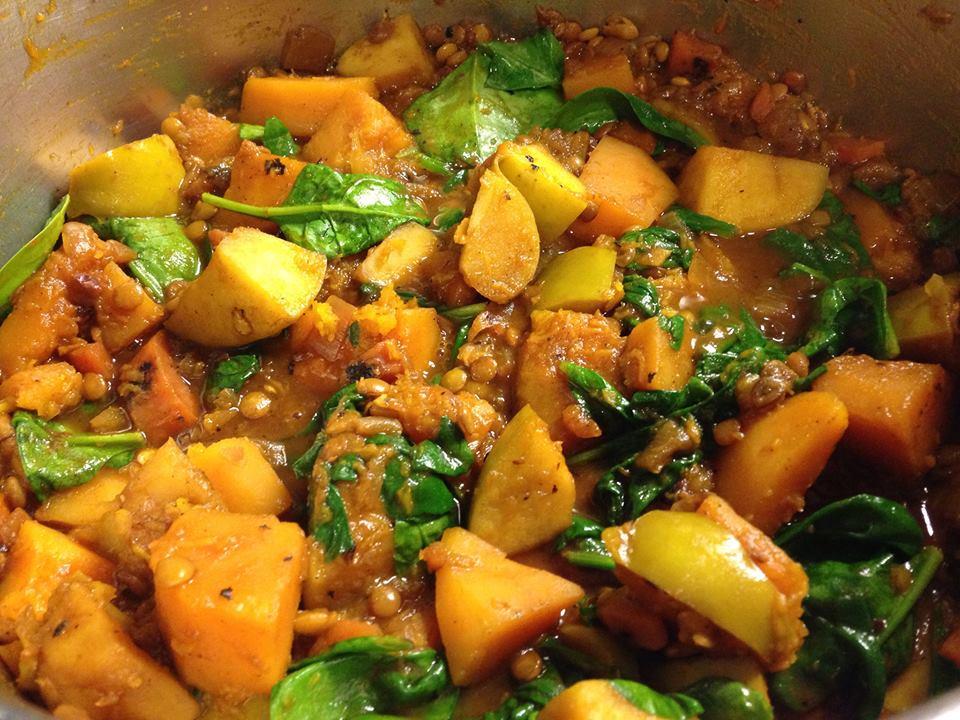A Love Letter to Winter Stew

I know that many of you are heartily glad for the coming spring temperatures that will soon erase the icy path traced by this year’s winter. While I certainly understand the eagerness for the spring weather that is by all regards rather late, I must confess I didn’t mind a last cold spell.
The reason, of course, is food. When I was young, my mother often remarked on the amazing ability of traditional peasant food to turn ingredients like stale bread and an odd agglomeration of bits and pieces into a delicious and filling meal. During cold winters, like the one that has blown through the country this year, I crave the warm comforts of peasant food.
Though I often joke that it is my solid Northern and Central European peasant blood that leads me to crave goulash, stroganoff, cabbage soup, and cassoulet when the weather turns bitter, it cannot be denied that there is something wonderfully warming about the universally simple meals that tended to crop up in the peasant classes, meals meant to make the best of meagre offerings and chase away the chilly fatigue of agricultural labor. Even with the industrialization of the world and the gradual death of the peasant classes from whom these meals originated, the dishes often stayed as part of a group’s collective culture.
While I wouldn’t mind a less slushy trek to class, I’m not quite ready to give up a last bowl of meaty tender goulash or put away French onion soup until next November. I will fully admit that the sweet berries of summer are divine, but winter food is my favorite. Perhaps it is the cozy comfort of a warm dish on a cold night that harkens back to a much colder and hungrier past, where a winter stew was a way of using the last crumbs of the harvest in hopes of outlasting the colder temperatures. Regardless, it is a comfort that no berry tart or chilled soup can ever really match.
Though my life has been luckily divorced from the poverty and difficulties of the peasant life from which these meals arose, I still crave the comfort of a warm bubbling pot, the smell of gumbo, the warm, full belly brought on by a bowl of stew. Spring food is light and airy, a celebration of the new growth and rebirth of the season, but winter food is a crackling fire and a warm blanket on a night when the last thing you want to do is leave the comfort of home. Even more, though, cooking itself never reaches the warm homeyness in spring that it does in winter. In winter, even whipping up an omelet brings a welcome gush of warmth that helps chase away the frigid temperatures outside. By spring, though, this becomes an unhappy reminder of the coming broil that will soon reduce the city to a sweaty and lethargic mass. I suppose this is my way of realizing that, though few others will miss it, I will miss the warm comfort of winter food and, in its own small way, a connection with a past that now exists only in the memories of cruel winter labor and diminishing stores brought on by these simple meals.
-Chloe Kaczvinsky